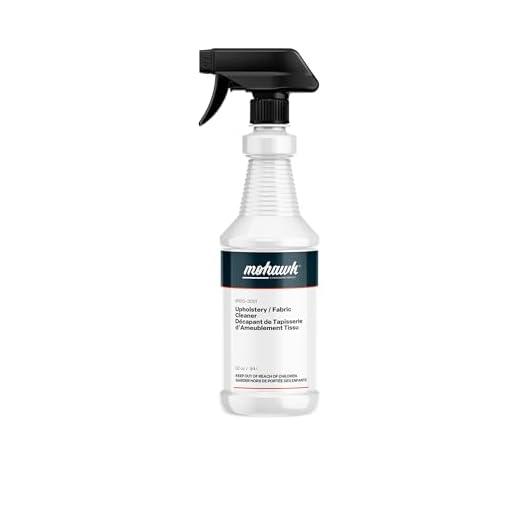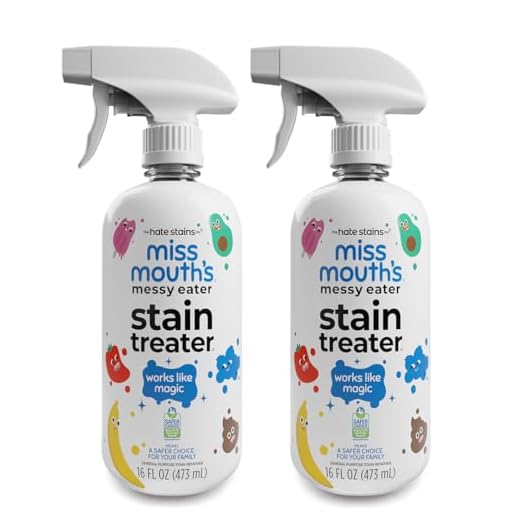

Act quickly with a clean, absorbent cloth to blot the affected area. The key is to avoid rubbing, which can spread the liquid further. Gently dab the spot to lift as much of the liquid as possible without pushing it deeper into the fabric.
Next, create a solution using equal parts of cold water and white vinegar. Apply this mixture to a clean cloth, then dab the area again, working from the outside in. This method helps to neutralize the pigments that have set into the fibers.
For tougher cases, consider using a specialized upholstery cleaner designed for your fabric type. Always perform a patch test on a hidden area first to ensure the cleaner doesn’t damage the material. Follow the instructions carefully for the best results.
Finally, rinse the area with cold water and blot dry. If necessary, repeat the process until the marks are fully lifted. Regular maintenance and immediate action can significantly enhance the longevity of your furniture’s appearance.
Effective Techniques for Treating Upholstery Marks
Begin treatment immediately to prevent the discoloration from setting. Blot the area gently with a clean cloth to absorb excess liquid without rubbing, which could spread the mark.
Mix one tablespoon of dish soap, one tablespoon of white vinegar, and two cups of warm water in a bowl. Dampen a cloth with this solution, then blot the affected area. Repeat this process until the mark fades, rinsing the cloth frequently.
For stubborn residues, consider using club soda. Pour a small amount onto the fabric and blot it with a cloth until the mark lifts. Always test any solution on a hidden area first to ensure it doesn’t damage the material.
Alternative Methods for Stubborn Marks
If the previous methods fail, try a paste made from baking soda and water. Apply the paste directly to the mark and let it sit for about 30 minutes. Afterward, gently brush off the dried mixture with a soft cloth.
Commercial upholstery cleaners specifically designed for tough marks can also be effective. Follow the manufacturer’s instructions carefully and ensure the product is safe for your fabric type.
Assessing the Fabric Type Before Treatment
Identify the material of your upholstery before applying any cleaning solution. Different textiles react uniquely to various cleaning agents. Some may require gentle methods, while others can handle more robust techniques.
Common Fabric Types
| Fabric | Recommended Approach |
|---|---|
| Cotton | Use mild detergent solutions; blot instead of rubbing. |
| Leather | Opt for leather-specific cleaners; avoid excess moisture. |
| Velvet | Utilize a soft cloth and avoid saturation; test any product first. |
| Microfiber | Employ a mixture of water and vinegar; blot gently. |
| Synthetic Fibers | Most can withstand stronger cleaners; check care labels. |
Always perform a spot test on an inconspicuous area to evaluate the fabric’s reaction to any cleaning solution. This practice helps prevent damage and ensures the best results without compromising the integrity of the upholstery.
Immediate Steps to Take After the Spill
Act quickly. Blot the affected area with a clean, dry cloth or paper towel. Avoid rubbing, as this can push the liquid deeper into the fabric. Use a light tapping motion to lift as much of the liquid as possible. If the cloth becomes saturated, switch to a new one to prevent spreading.
Neutralize the Liquid
After blotting, sprinkle salt or baking soda on the area. These substances can absorb excess moisture. Allow it to sit for at least five minutes before gently brushing it away.
Prepare for Cleaning
Combine equal parts of water and white vinegar in a spray bottle. This mixture can help break down the pigments. Lightly mist the solution onto the area, then blot again with a clean cloth. Repeat until the discoloration begins to fade.
Always test any cleaning solution on an inconspicuous area first to ensure it won’t damage the fabric. Keep the area well-ventilated during this process.
Homemade Solutions for Stain Removal
Mix equal parts of white vinegar and dish soap, apply it to the affected area, and gently blot with a clean cloth. This combination effectively neutralizes pigments while lifting residue.
A paste made of baking soda and water can also be beneficial. Spread the paste over the mark, let it dry, then vacuum. The baking soda absorbs discoloration and odors.
Another method involves club soda. Pour it directly onto the spot, allowing the carbonation to break down the pigments. Blot with a cloth until the area is clean.
For a natural approach, try a solution of hydrogen peroxide and liquid dish soap. Mix in a ratio of 2:1, apply, and let it sit for a few minutes before blotting. Test on an inconspicuous area first to ensure colorfastness.
Additional Tips
After treating the area, rinse with cold water and blot dry. Avoid heat sources like hair dryers, as they can set any remaining discoloration. Regular cleaning of the fabric can help prevent future mishaps.
For those interested in culinary delights, check out this link for tips on how to cook lean diced beef.
Commercial Products That Work on Wine Stains
Consider using specialized cleaners designed to tackle these challenging marks. Here are some reliable options:
- OxiClean MaxForce – This stain remover is effective on various types of fabric, breaking down pigments and lifting them away.
- Wine Away – Formulated specifically for tackling these issues, this product is known for its ability to eliminate even older marks.
- Zout Laundry Stain Remover – Though primarily a laundry product, it can be applied to upholstery with good results, especially when combined with a blotting technique.
- Shout Advanced Gel – This gel penetrates fibers, making it suitable for tough spots, allowing for deeper cleaning.
- Stain Solver – This oxygen-based cleaner is eco-friendly and effective on a variety of surfaces, including upholstery.
Always perform a spot test on a hidden area to ensure compatibility with the fabric before application. Follow the instructions for best results, and act quickly for optimal effectiveness.
Additionally, check for products containing enzymes, as they can break down complex stains and enhance cleaning efficiency.
Preventing Future Stains on Your Sofa
Apply a fabric protector spray specifically designed for upholstery. This creates a barrier against spills, making it easier to clean up before permanent marks set in.
Consider using slipcovers made of stain-resistant materials. They can be easily removed and washed, offering a practical solution for high-traffic areas.
Establish a no-food-and-drink policy on your seating. This simple rule significantly reduces the risk of accidental spills and keeps your furniture looking fresh.
Regularly clean and maintain your upholstery. Vacuuming can help eliminate dust and debris, while periodic professional cleaning can extend the life of your fabric.
Encourage guests to use coasters and place drinks on stable surfaces. This small reminder can prevent unintended accidents during gatherings.
Stay informed about the latest fabric technologies. Innovations in upholstery materials often include enhanced resistance to spills and easier cleaning options.







